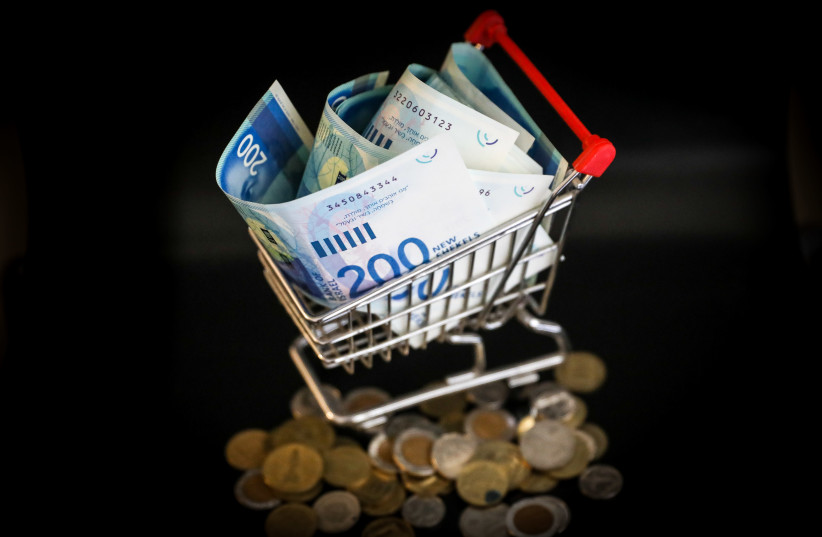While top innovators and start-up entrepreneurs may not feel the burn of the rising cost of living in Israel – which has recently been exacerbated by an increase in the cost of electricity and gasoline, alongside a currently-postponed price increase in food produced by mega-manufacturer Osem – a large portion of the nation could be significantly impacted if prices continue their current trajectory.
In general, the cost of living in Israel is going up. Not only has Tel Aviv been named the world’s most expensive city by The Economist, but recent weeks have seen a 2.9% increase in Israel’s Consumer Price Index (CPI) – a statistic produced by the Central Bureau of Statistics that represents the changing price of a weighted average basket of consumer goods and services purchased by households in the country.
The rising CPI reflects an upward shift in food and utilities. As of February 1, 2022, the cost per kilowatt hour of electricity was raised from NIS 0.43 to NIS 0.45. According to Israel Electric, the average Israeli home’s electricity use is around 8,000/kWh. Therefore, at the current price, the average resident spends around NIS 3,600 per year, representing a NIS 160 increase over the previous tariff.
Similarly, the maximum price of 95 octane gasoline was increased to NIS 6.71 per liter. A family that was spending NIS 200 per month to fill their tank at the previous rate may be faced with an NIS 120 yearly increase.
An extra NIS 280 per year (or NIS 23 per month) may not seem like much to some, but to others it can make an impact on financial security. If prices continue to rise, the cost could become dire for Israel’s financially-disadvantaged residents.

“In my household, if Osem or the electric company start to charge more, I don’t really feel that. But low-income people, the people that Ogen group serves – most of Israel – the percentage of their income going toward food and basic goods like electricity and water, is huge,” said Sagi Balasha, CEO of Ogen Group.
Ogen Group is a collection of nonprofit organizations dedicated to increasing low-income Israelis’ access to affordable credit and financial aid. One branch of that group, Ogen’s financial advisory arm, has given Balasha insight into the needs and pain points of the financially disadvantaged in Israel. “For those people, [the rising cost of living] is devastating.”
In 2020 alone, 150,000 people joined the circle of food insecurity, defined as a lack of consistent access to food necessary to lead an active, healthy life. In 2020 alone, the country’s homeless population grew by 27%, with over 3,471 homeless cases known to authorities (and doubtless many more unknown cases).
According to the World Inequality Report 2022, the average Israeli’s income is NIS 223,040; for the bottom-earning half of the country, though, that number plummets to NIS 57,900. Israel has one of the world’s highest income-wage gaps, with the bottom 50% of the nation making 19 times less than the top 10%.
Balasha noted that the high cost of living in Israel causes many within that 50% to deplete their checking accounts before they can make their next paychecks.
“They’re people who can’t make it through the month. That’s a phrase Israelis use all the time.
“Our expenses are higher than our incomes, and we can’t make it. That’s what brings many people to overdraft.” He explained how overdrafting one’s checking account is a very common occurrence in Israel. If the “American Disease” is to take out dozens of credit cards and accumulate debt, said Balasha, overdrafting is the “Israeli Disease.”
While some residents in large cities like Tel Aviv may hold the opinion that “the rich are getting richer, but the poor are also getting richer” (as one fintech worker told The Jerusalem Post last month), the country’s substantial wage gap coupled with its gradually increasing prices are leading to a situation where the poor are less and less able to clear the financial security threshold. If the upward trend in prices doesn’t reverse, it may soon be joined by an upward trend in poverty, homelessness, and food insecurity.
